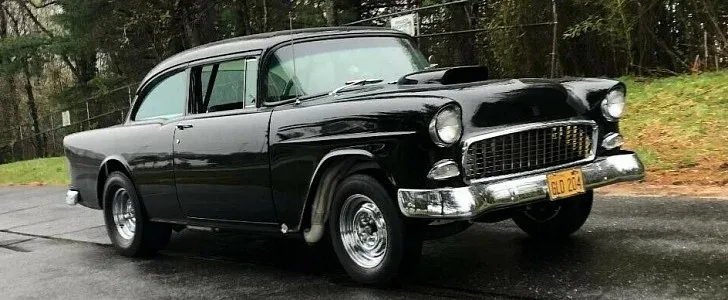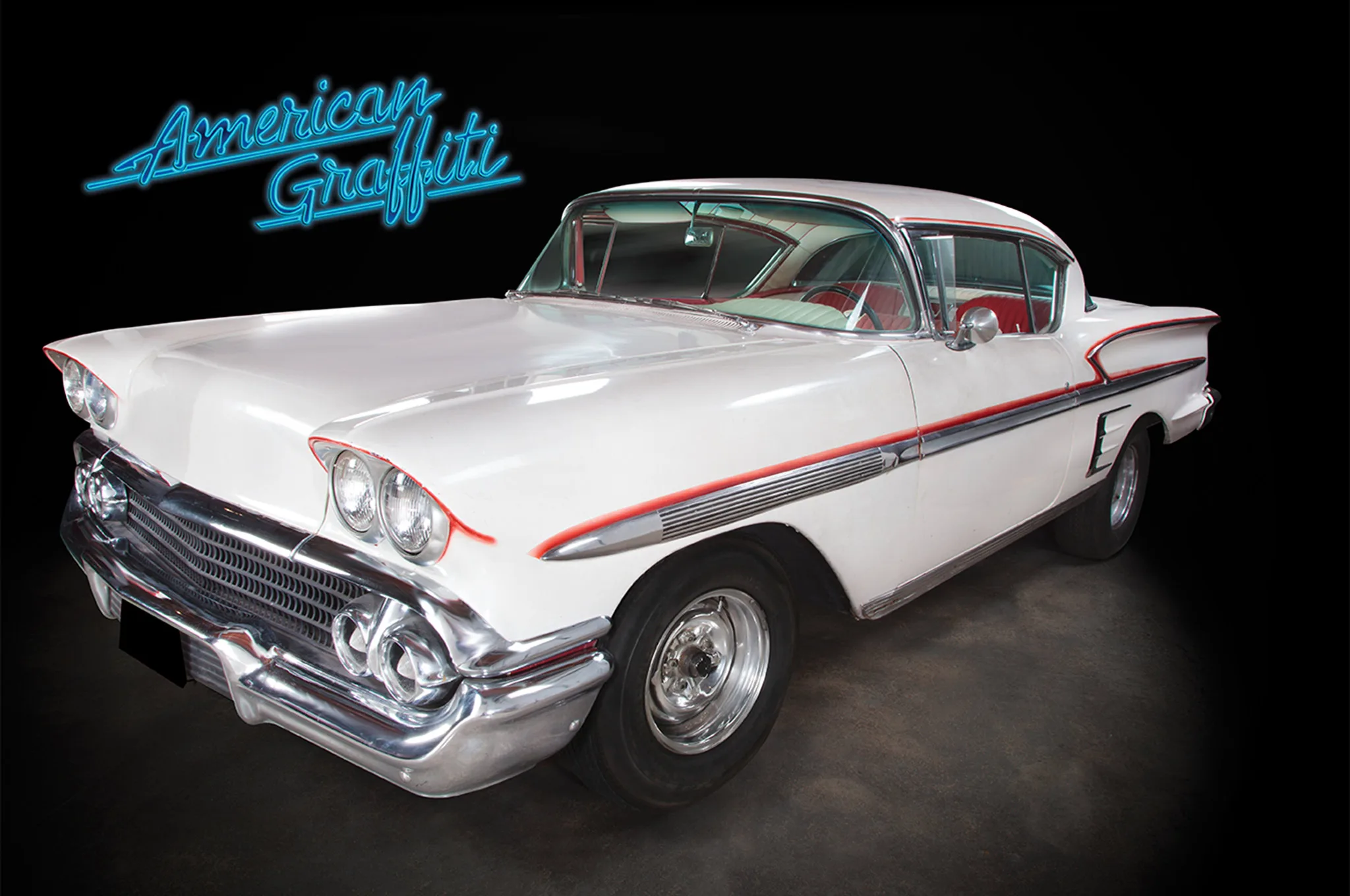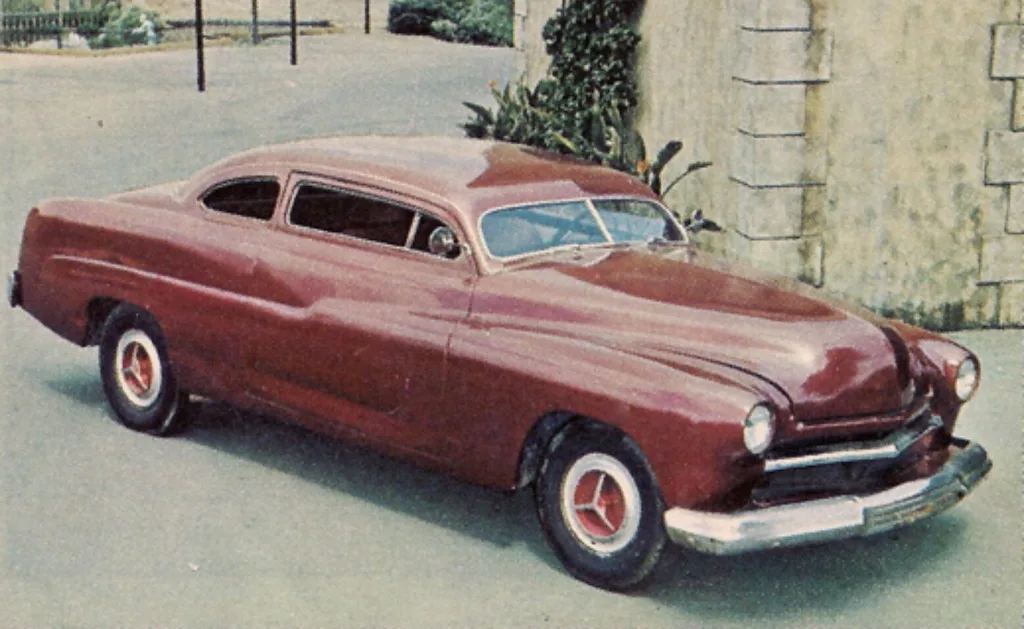In the summer of 1973, George Lucas released a small-budget film that would go on to become a cultural milestone. American Graffiti was more than a nostalgic look back at a single night in 1962 Modesto, California—it was a celebration of teenage freedom, cruising culture, rock and roll, and above all, cars. Gleaming chrome and the roar of V8s weren’t just background noise—they were central characters, embodying the spirit of a generation on the cusp of change.
The cars of American Graffiti helped shape the film’s soul. From the lean, yellow 1932 Ford Coupe driven by street hero John Milner, to the sleek white Thunderbird that carried a dreamgirl through neon-lit streets, each vehicle had a story to tell. These machines were more than transportation—they were extensions of the characters themselves: their insecurities, ambitions, and ideals.
Nearly five decades later, the film’s cars remain iconic. They’ve inspired generations of car enthusiasts, helped revive hot rod and cruising culture, and earned their place in the pantheon of America’s most beloved film vehicles. In this article, we explore each major car from American Graffiti, the stories behind them, and the lasting impact they’ve had on car culture.
The Yellow Deuce Coupe – John Milner’s Hot Rod

The most iconic car in American Graffiti—and arguably one of the most recognizable hot rods in film history—is John Milner’s bright yellow 1932 Ford Coupe, affectionately known as the “Deuce Coupe.”
Car Specs:
-
Year/Model: 1932 Ford 5-window Coupe
-
Engine: Chevy small-block V8 (283 or 327 cu in)
-
Transmission: Muncie M-22 four-speed manual
-
Rear End: 1957 Chevy with 4.11 gears
-
Body Mods: Chopped roof, removed fenders, louvered hood, custom nerf bars
Cultural Significance:
John Milner (played by Paul Le Mat) is the quintessential street racer: proud, tough, and loyal to his roots. His car mirrors that image—raw, fast, and minimalist. The Deuce Coupe’s yellow body is like a rolling warning sign. It’s a machine that means business.
The car not only served as a symbol of resistance against changing times, but also represented an entire generation of hot rodders who built their identities in garages and on quarter-mile strips. Milner’s showdown with Bob Falfa (Harrison Ford) remains one of the most iconic drag race scenes in film.
After the film, the Deuce Coupe gained fame at custom car shows across the country and was restored several times. Today, it is preserved as a piece of American automotive and cinematic history.
Bob Falfa’s Black ’55 Chevy

The dark foil to Milner’s yellow Deuce, Bob Falfa’s black 1955 Chevy, is a brute force machine that plays the role of antagonist and challenger. Played by a then-unknown Harrison Ford, Falfa brings bravado, mystery, and muscle to the screen—traits perfectly matched by his ride.
Car Specs:
-
Year/Model: 1955 Chevrolet 150 2-door sedan
-
Engine: Big-block V8 (rumored 454 or 427 ci)
-
Transmission: Muncie 4-speed
-
Modifications: Fiberglass hood with scoop, roll cage, black primered paint
History and Fun Facts:
The ’55 Chevy used in American Graffiti was no ordinary movie prop. It was one of several built for the earlier film Two-Lane Blacktop (1971), starring James Taylor. The car was re-used, slightly altered, and given to Ford’s character to film the infamous drag race with Milner.
Falfa’s Chevy wasn’t meant to be elegant—it was a straight-line brawler. The crash at the end of their race isn’t just cinematic; it’s symbolic, marking the end of an era and a warning about the cost of living fast.
This car became so legendary, it’s been recreated by enthusiasts worldwide. One surviving version from the film still appears at shows and auctions, commanding significant attention.
Steve Bolander’s 1958 Chevy Impala

Driven by Steve Bolander (Ron Howard), the white and flame-pinstriped 1958 Chevy Impala stands out for its grace, polish, and optimism—qualities that reflect the character’s personality.
Car Specs:
-
Year/Model: 1958 Chevrolet Impala Sport Coupe
-
Engine: Believed to be a 327 ci V8 with triple Stromberg carbs
-
Exterior: White with subtle red and orange pinstriping
-
Interior: Red-and-white vinyl with dash-mounted dice
Symbolism:
Steve’s Impala isn’t the fastest car on the strip, but it is one of the most detailed and refined. In a movie full of brawling hot rods and chopped coupes, the Impala represents suburban dreams, upward mobility, and a future that’s still unwritten.
Throughout the film, Steve loans the car to Terry “Toad” Fields—a socially awkward but well-meaning teen—which leads to some of the film’s funniest and most poignant moments. The car, like its owner, straddles two worlds: responsibility and rebellion.
The Impala used in filming was later sold for a few hundred dollars. It changed hands multiple times before eventually being restored by NASCAR legend Ray Evernham, who called it one of the most meaningful cars in his collection
More Than Just Metal: Cars as Cultural Symbols
In American Graffiti, every car is a character in its own right. George Lucas didn’t just use these vehicles for realism—he used them to reflect the inner world of the people driving them. Each car was a statement of identity, status, and direction in life.
John Milner’s 1932 Ford was fast, stripped-down, and unpolished—just like Milner, who clings to the street-racing lifestyle and resists change. Steve’s 1958 Impala is sleek and refined, much like his plan to go off to college. Bob Falfa’s menacing 1955 Chevy foreshadows the rise of raw muscle cars and a more dangerous edge to youth culture.
Even the mysterious blonde in the 1956 white Thunderbird functions as a symbol of longing, fantasy, and the elusive nature of love. Curt (played by Richard Dreyfuss) chases after her throughout the film, and her car becomes a metaphor for the dreams we chase but never quite reach.
Supporting Stars on Wheels
While the three main cars tend to steal the spotlight, many others play crucial roles in crafting the film’s authentic 1960s atmosphere:
-
Curt’s ride: A chopped-top 1951 Mercury coupe. Sleek and low, it’s a classic “lead sled”—symbolizing a smooth, cool exterior masking internal uncertainty.
-
Lori’s car: A pink and white 1958 Edsel Corsair—one of the most controversial cars of the 1950s. It represents the hope and glamour that automakers tried to sell, even when designs didn’t match public taste.
-
The Blonde’s 1956 Ford Thunderbird: Elegant, poised, and unattainable—this car floats through the night as a symbol of romantic idealism. Its white body and top-down silhouette stand out in a sea of custom coupes and sedans.
.


